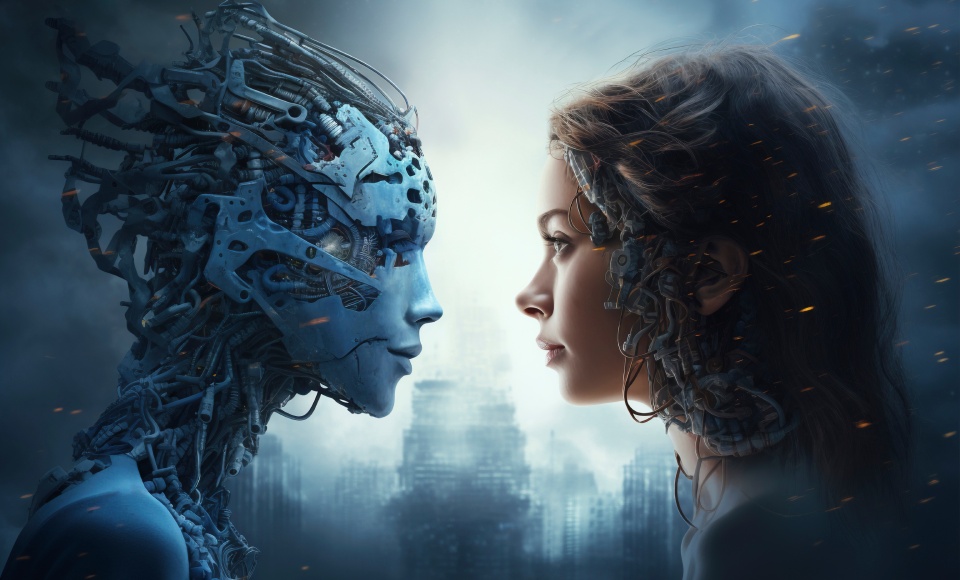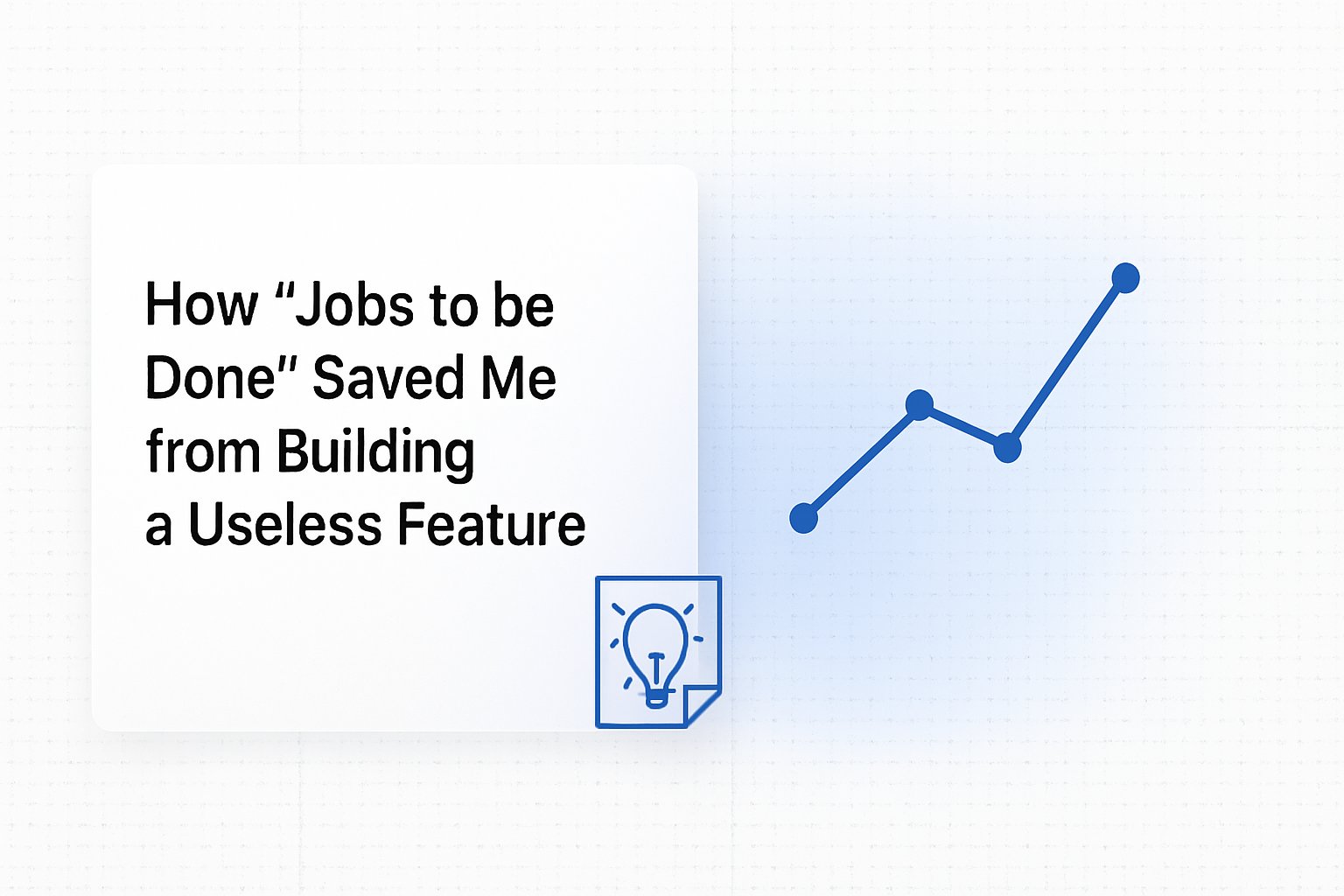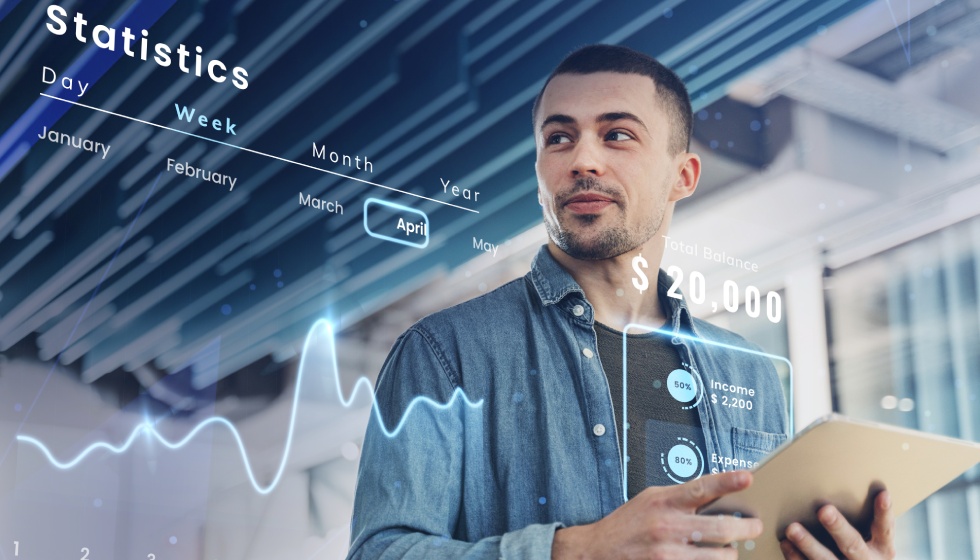The public conversation surrounding artificial intelligence is often a dizzying pendulum swing between two extremes. On one side, there are dire warnings of mass job displacement and autonomous systems spiraling out of control. On the other, there is breathless hype about the latest chatbot or image generator, presented as the pinnacle of innovation. While both perspectives capture a sliver of the truth, they largely miss the far more profound and systemic transformations already underway. And that is the reason we all should know Why AI is Important!
Artificial intelligence is not merely another incremental technological advance; it is a General-Purpose Technology (GPT), a rare and powerful force with the potential to reshape society on the scale of the steam engine, electricity, or the internet. Its true importance lies not in the specific tasks it automates, but in its capacity to fundamentally re-architect entire economies, accelerate the pace of scientific discovery, augment human intellect in every profession, realign the global balance of power, and offer novel solutions to humanity’s most intractable problems.
Simultaneously, AI acts as an uncomfortable mirror, reflecting and amplifying our societal flaws, forcing a necessary reckoning with our biases, our ethics, and our definitions of privacy. Ultimately, its development pushes us toward a philosophical horizon where we must confront fundamental questions about our own future.
I prepared a report that explores why AI is important, moving beyond the superficial to examine seven layers of AI’s impact. This reveals why its importance is far greater and far more nuanced than most people think.

Reason 1: It’s Not Just Automating Jobs, It’s Architecting Entirely New Economies
The dominant narrative surrounding AI’s economic impact has been narrowly focused on automation and job displacement. While AI is undeniably reshaping roles and workflows, this perspective overlooks its more powerful function as a generative force—one that is creating entirely new industries, value chains, and economic models from the ground up.
The Automation and Augmentation Reality
The fear of AI replacing jobs, particularly those involving repetitive or procedural tasks, is grounded in reality. However, the data suggests a more complex picture of augmentation and productivity enhancement. A joint study by MIT and Stanford, for example, found that access to an AI assistant increased the productivity of customer support agents by 14% on average. More strikingly, it boosted the performance of the least experienced workers by 34%, suggesting AI can act as a powerful tool for closing skill gaps rather than simply eliminating jobs.
This phenomenon, where technology creates new roles and enhances the value of existing ones, is known as the “reinstatement effect”. The market is already reflecting this shift. A 2025 PwC report reveals that workers with specialized AI skills command an average wage premium of 56%—a figure that has more than doubled in just one year, signaling a high economic value placed on human-AI collaboration.
The Physical Infrastructure of Intelligence
Often lost in the software-centric discussion of AI is the massive physical ecosystem required to power it. This new infrastructure represents a tangible and rapidly growing sector of the global economy.
- Semiconductors: Modern AI models are computationally voracious. A single query to a system like ChatGPT can trigger billions of calculations, all of which depend on specialized chips like Graphics Processing Units (GPUs) and Tensor Processing Units (TPUs). This has ignited a new, multi-billion-dollar market for the design and manufacture of these advanced semiconductors.
- Hardware and Data Centers: These chips must be housed in an expansive network of servers, storage drives, and cooling systems, all located within massive, purpose-built data centers. The construction and operation of these facilities are driving a boom in industrial real estate, manufacturing, and engineering.
- The Power Grid: The most surprising dependency is energy. A single ChatGPT query consumes nearly ten times the electricity of a traditional Google search (2.9 watt-hours vs. 0.3 watt-hours). Shifting the world’s daily internet searches to AI could demand an additional 10 terawatt-hours of electricity annually, roughly equivalent to the yearly consumption of over 900,000 U.S. homes. This creates a colossal, long-term growth market for utility companies, especially those specializing in the renewable energy sources needed to power this expansion sustainably.
Unlocking “Latent Markets” and New Value
Beyond building new physical industries, AI is creating entirely new digital markets. It achieves this by drastically lowering the cost of prediction, a core component of countless business decisions. This cost reduction makes it possible to serve “latent markets”—areas where demand existed but could not be met because the service was too expensive or complex to deliver at scale.
- Personalized Financial Services: For decades, bespoke financial advice was a luxury reserved for the wealthy. AI can now analyze an individual’s financial data to provide tailored investment recommendations, credit scoring, and fraud detection at a massive scale, democratizing access to sophisticated financial services.
- Hyper-Personalized Global Commerce: Companies like TikTok and Shein have leveraged AI to internationalize their operations without the massive upfront cost of traditional market research. Instead of analyzing country-level demographics, their algorithms infer “revealed preferences” by analyzing the real-time behavior of individual users. This creates powerful data network effects, where the platform becomes more personalized and valuable with each new user, allowing these companies to operate globally while catering to individual tastes.
The economic impact of AI is not a simple story of labor substitution. It is a systemic restructuring that is simultaneously building a new, capital-intensive physical-digital industrial base (chips, data centers, energy) and unlocking previously inaccessible markets through the radical reduction of prediction and personalization costs.
While the initial focus has been on the automation of white-collar tasks, this first-order effect obscures the more profound second- and third-order impacts of market creation and economic re-architecture. Evidence of this is already emerging: a PwC report found that industries more exposed to AI are experiencing three times higher growth in revenue per employee, a clear indicator of AI’s value-creation potential.
Edge AI and IoT Integration
A significant trend on the horizon is edge AI—the practice of processing data closer to its source, such as on a local device or edge server, rather than relying solely on centralized cloud computing. This shift is particularly transformative for Internet of Things (IoT) devices, enabling faster decision-making, reduced latency, and improved privacy.
From smart cities that optimize traffic flow in real-time to healthcare devices that monitor patient conditions instantly, edge AI is set to revolutionize industries by making technology more responsive and efficient.

Reason 2: It’s Fundamentally Rewriting the Scientific Method
For centuries, the scientific method has been a cornerstone of human progress, a reliable process of observation, hypothesis, experimentation, and analysis. Today, artificial intelligence is not merely accelerating this process; it is fundamentally altering its structure, creating a new paradigm of discovery that is generating breakthroughs at a pace and scale previously unimaginable.
From Educated Guess to AI-Generated Hypothesis
Traditionally, formulating a hypothesis has been a deeply human endeavor, blending expert knowledge, intuition, and educated guesswork. AI is transforming this initial step by sifting through mountains of scientific literature and vast datasets to identify non-obvious patterns, correlations, and gaps in knowledge that can lead to novel hypotheses.
A project from the University of Chicago, named HypoGenic, demonstrates this capability by using large language models (LLMs) to generate testable hypotheses from both literature and data. In one experiment, the hypotheses generated by the system helped human participants improve their accuracy in detecting AI-generated text by over 14%.
In a more striking example, Google’s “Co-scientist” system, a collection of collaborating AI agents, was tasked with exploring a biological puzzle. It independently proposed a novel hypothesis about how certain viruses interact with bacteria—a hypothesis that, unbeknownst to the AI, had already been secretly validated by human researchers, confirming the system’s capacity for genuine discovery.
The New Era of Automated Discovery
AI’s role extends beyond ideation into the practical realms of experimentation and analysis. It can design optimized experimental protocols, simulate outcomes that would be too costly or dangerous to conduct in the real world (such as in climate science or particle physics), and analyze the resulting data with superhuman speed and precision. This is creating a new, closed-loop scientific process where AI can hypothesize, design an experiment, and analyze the results, often with the help of automated “cloud labs” that run physical experiments 24/7 based on the AI’s instructions.
This new paradigm is already yielding a cascade of unprecedented breakthroughs:
- Materials Science: Google DeepMind’s Graph Networks for Materials Exploration (GNoME) project analyzed known chemical structures to discover over 380,000 new, thermodynamically stable materials. This achievement is estimated to be equivalent to “nearly 800 years’ worth of knowledge”. Concurrently, Microsoft’s MatterGen model can generate novel material structures based on a researcher’s desired properties, potentially accelerating the development of next-generation batteries, superconductors, and electronics.
- Life Sciences: Building on the revolutionary impact of AlphaFold, which solved the 50-year-old grand challenge of protein structure prediction, scientists are now using AI to design entirely new proteins from scratch. Recent research has demonstrated the ability to create novel proteins that can effectively neutralize deadly snake venoms. In another groundbreaking application, AI is analyzing the genomes of extinct species, such as Neanderthals and woolly mammoths, to discover previously unknown molecules with antibiotic properties, opening a new front in the fight against drug-resistant bacteria.
- Climate Science: AI is outperforming traditional methods that require massive supercomputers. Aurora, a 1.3 billion-parameter AI model trained on over a million hours of Earth system data, delivers faster and more accurate forecasts for air quality, weather, and tropical cyclones. Another model, Spherical DYffusion, can execute a 100-year climate simulation in just 25 hours on a standard GPU cluster—a task that would take weeks on a dedicated supercomputer.
Opening the Black Box for Deeper Understanding
A significant challenge with these powerful AI models is their “black box” nature; if we don’t understand how an AI reached a novel conclusion, we cannot fully trust it or build upon its discovery. This has spurred the development of
Explainable AI (XAI), a field dedicated to making AI decision-making transparent. XAI methods provide insights into the “machine view”—the specific data points or features a model deemed most important for its prediction.
Crucially, XAI is becoming more than just a tool for validation; it is evolving into a new instrument for scientific discovery. When a scientist can understand why an AI made a surprising prediction, they can uncover the underlying scientific principles the model has learned. This insight can spark new, human-led hypotheses, creating a powerful, iterative cycle of human-machine collaboration. AI is not simply a tool to accelerate the existing scientific method; it is inverting parts of the process.
Science is evolving from a purely human-led, hypothesis-driven endeavor into an AI-enabled, data-driven partnership. AI generates hypotheses from vast data, and the human scientist’s role shifts to that of a strategic collaborator, validator, and interpreter, using tools like XAI to translate the machine’s discoveries into human understanding.
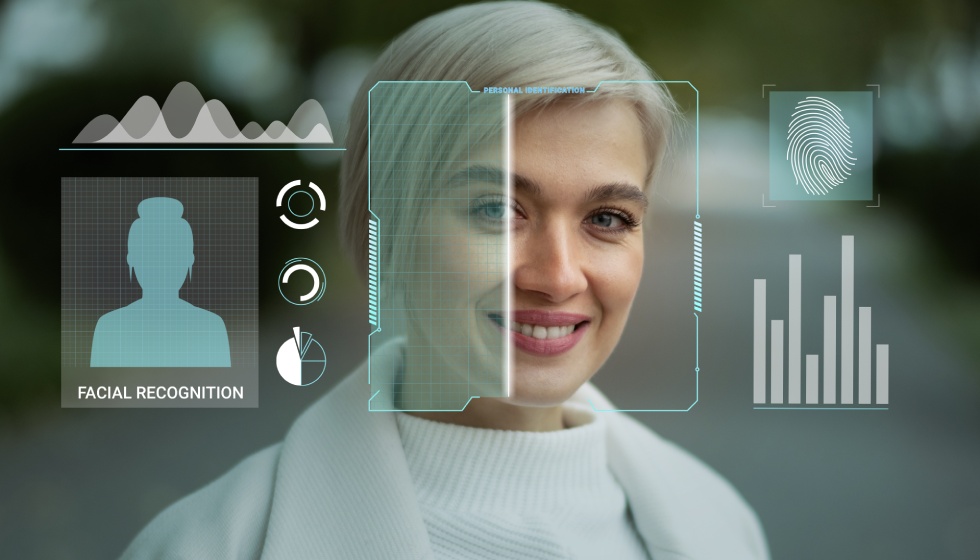
Reason 3: It’s Becoming Our Cognitive Co-Pilot
Beyond its role in labs and data centers, AI’s most pervasive and personal impact will be its integration into the daily work of professionals across every field. It is not arriving as a replacement but as a cognitive partner, a co-pilot designed to augment human decision-making, creativity, and expertise.
This paradigm, often called “augmented intelligence,” focuses on human-machine collaboration to achieve outcomes that neither could accomplish alone.
Augmenting High-Stakes Decisions
In complex, data-rich environments, AI-driven Decision Support Systems (DSS) are becoming indispensable. These systems process vast amounts of information, identify subtle patterns, and simulate potential outcomes, empowering human experts to make faster, more accurate, and more robust decisions.
- In Healthcare: AI algorithms analyze medical images with a precision that can exceed human capability. For instance, studies have shown AI models outperforming radiologists in detecting cancerous lung nodules and identifying signs of breast cancer earlier. These tools do not replace the doctor; they act as a “cognitive extension,” flagging potential issues and synthesizing patient data so the clinician can focus on the final diagnosis, treatment planning, and the uniquely human aspects of patient care, such as empathy and ethical judgment.
- In Finance: The sheer volume and velocity of financial data have long surpassed human cognitive limits. AI systems now monitor billions of transactions in real-time to detect fraudulent patterns, execute algorithmic trades based on fleeting market signals, and assess credit risk by analyzing thousands of variables simultaneously—tasks impossible for a human analyst. This allows financial professionals to shift their focus from data processing to strategic oversight and client relations.
- In Supply Chain Management: Global supply chains are intricate networks of weather patterns, traffic, consumer demand, and geopolitical events. AI optimizes logistics by analyzing this complex, real-time data to forecast needs, plan the most efficient delivery routes, and predict disruptions before they occur. This frees human managers to handle strategic challenges, negotiate with partners, and manage the inevitable exceptions that require human ingenuity.
A New Muse for Human Creativity
Contrary to fears that AI will render creative professions obsolete, it is emerging as a powerful collaborative tool that can augment and even democratize the creative process.
AI serves as an indefatigable brainstorming partner, helping creators overcome the dreaded “blank page” by generating initial ideas, musical motifs, visual concepts, or story drafts. In the visual arts, tools like DALL-E and Midjourney allow artists to rapidly prototype ideas and explore stylistic variations that would have once taken days or weeks.
In music, AI can handle complex technical tasks like generating harmonies or mastering a track, allowing a human composer to focus on melody, structure, and emotional expression. In writing and marketing, AI assists with research, suggests headlines, and structures first drafts, while the human author provides the narrative vision, nuanced voice, and strategic insight.
Research suggests this collaboration can be an equalizer. Studies have shown that access to AI creative tools provides a significant boost to individuals who are less innately creative, improving the quality and enjoyability of their work, thereby democratizing creative expression.
The Cognitive Division of Labor
The integration of AI into professional work is forging a new cognitive division of labor. AI excels at what can be termed convergent thinking: sifting through vast amounts of data to find the single best or most probable answer, identifying patterns, and executing well-defined analytical tasks. Humans, in contrast, retain a critical edge in
divergent thinking: creativity, strategic planning, ethical judgment, and navigating ambiguous, context-rich situations where there is no single right answer.
This shift redefines professional value. In the coming era, an expert’s worth will be defined less by the knowledge they possess—which an AI can access instantly—and more by their ability to ask the right questions, critically interpret AI-generated insights, and exercise wisdom.
However, this partnership is not without its challenges. The phenomenon of “cognitive offloading”—delegating our thinking to external aids—poses a real risk. Studies indicate that while moderate AI use can be beneficial, excessive reliance may lead to the atrophy of our own critical thinking and analytical skills. The future, therefore, depends on cultivating a balanced collaboration where AI complements and challenges human thought, rather than replacing it entirely.
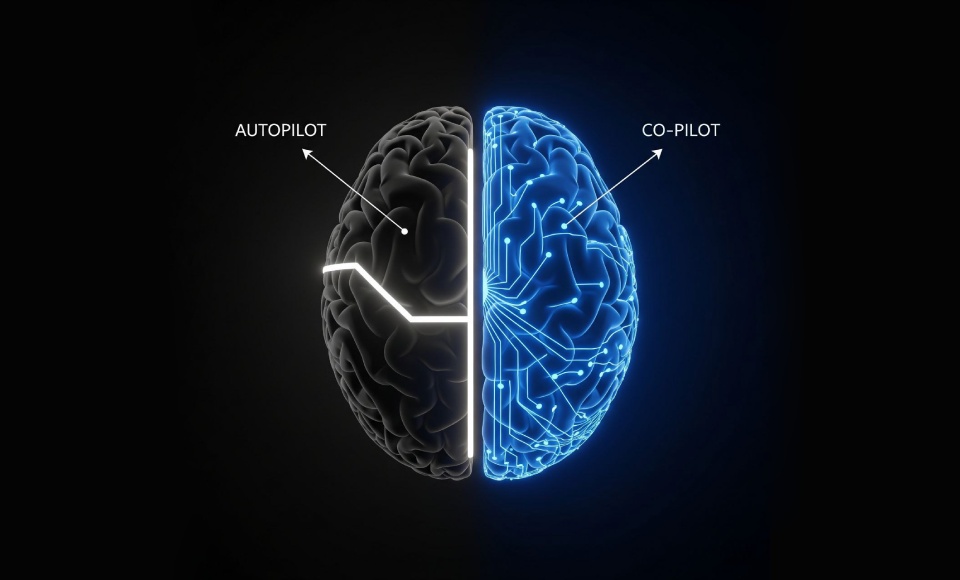
Reason 4: It’s the New Geopolitical Chessboard
Artificial intelligence has transcended the realm of technology to become a central arena for global power competition. Nations now view leadership in AI as a strategic imperative, on par with nuclear capability or dominance in space, essential for 21st-century economic competitiveness and national security.
This has ignited a fierce, multi-dimensional “AI arms race,” primarily among the United States, China, and the European Union, with each power championing a distinct model for AI development and governance.
A Tale of Three Strategies
The global competition over AI is not just about who can build the most powerful model; it is a fundamental clash of values and governance philosophies.
- The European Union: The Regulatory Empire. The EU has positioned itself as the world’s leading AI regulator. Its landmark AI Act, the first comprehensive legal framework for AI globally, establishes a risk-based approach. It outright bans applications deemed to have “unacceptable risk,” such as social scoring and emotion recognition in workplaces, while imposing strict compliance, transparency, and human oversight requirements on “high-risk” systems in areas like healthcare and critical infrastructure. The EU’s strategy is to leverage its market power to export its human-centric, rights-focused regulatory standards globally—a phenomenon known as the “Brussels Effect”.
- China: The State-Driven Ambition. China’s AI strategy is centralized, state-led, and deeply integrated with its national goals. Foundational policies like the “New Generation AI Development Plan” and “Made in China 2025” prioritize technological self-sufficiency, national security, and social governance. The government fosters deep collaboration between the state and its tech giants, directing massive investment toward building a domestic AI ecosystem, from semiconductor production to the development of homegrown models like DeepSeek. This approach enables rapid, large-scale deployment of AI for applications ranging from smart cities to state surveillance.
- The United States: The Market-Led Innovator. The U.S. has historically favored a more fragmented, market-driven approach, prioritizing private-sector innovation with lighter regulation to avoid stifling growth. Its strength lies in its vibrant ecosystem of tech companies, research universities, and venture capital. However, recognizing the growing risks, recent presidential executive orders have signaled a shift toward more structured governance, seeking to balance rapid innovation with safety, security, and the protection of civil rights.
The following table provides a comparative overview of these competing strategies.
| Feature | European Union | China | United States |
| Legal Framework | Comprehensive, horizontal law (AI Act) | Sector-specific and provincial regulations, state-led | Fragmented federal approach, state-level laws, market-driven |
| Regulatory Approach | Risk-based (unacceptable, high, limited, minimal) | State control, focus on national security and social stability | Focus on innovation, with recent moves toward safety and security frameworks |
| Key Prohibitions | Social scoring, manipulative AI, real-time biometric surveillance (with exceptions) | Regulates deepfakes and generative AI content, but uses AI for state surveillance | No federal prohibitions; some state-level restrictions (e.g., on biometric data) |
| High-Risk AI | Strict requirements for transparency, data quality, and human oversight | Stringent rules and approval processes for high-risk applications | Sector-specific rules (e.g., healthcare, finance); no universal federal framework |
| Innovation Policy | Public-private partnerships, AI-on-demand platform | Massive state-led investment, military-civil fusion, focus on self-sufficiency | Primarily private-sector driven, significant R&D funding, export controls on key tech |
| Global Stance | Aims to set the global standard for ethical, human-centric AI (“Brussels Effect”) | Promotes its AI governance model and technology to developing nations, especially in the Global South | Promotes a democratic, market-based model for AI development and use |
The New Tools of Power
This geopolitical competition extends directly into the domains of warfare and diplomacy. Militaries are integrating AI for intelligence analysis (such as the Pentagon’s Project Maven), cybersecurity, and the development of lethal autonomous weapons systems (LAWS), sparking a new arms race.
Simultaneously, AI is becoming a standard tool of statecraft. Foreign ministries now use AI to automate routine work like summarizing media reports and drafting speeches, provide real-time translation during negotiations, and conduct sentiment analysis to gauge public opinion in other countries.
The global AI race is therefore more than a contest for technological supremacy; it is a proxy war for influence over the operating system of 21st-century society. When a developing nation adopts an AI platform, it is not just choosing a technology—it is implicitly importing a set of values.
A system built on the Chinese model may come with powerful tools for state control and surveillance. A platform compliant with the EU AI Act brings with it a framework centered on individual rights and privacy. The strategic control of AI technology, data, and standards has become the new, decisive battleground for global influence.

Reason 5: It’s Our Best Tool for Tackling Global Grand Challenges
Humanity’s most pressing threats—climate change, pandemics, food insecurity, and poverty—are not simple, isolated problems. They are complex adaptive systems, characterized by countless interacting variables, feedback loops, and non-linear dynamics. For the first time in history, we have a tool capable of modeling, predicting, and managing this level of complexity.
Artificial intelligence is emerging as our most powerful instrument for moving from a state of reactive crisis management to one of proactive, predictive governance on a global scale.
Global Health and Pandemic Preparedness
The COVID-19 pandemic exposed the world’s vulnerability to biological threats. AI is now at the heart of building a more resilient global health infrastructure.
- Predictive Surveillance: AI-driven systems like EPIWATCH and HealthMap continuously scan millions of open-source data points—including news articles, social media posts, and airline travel data—to detect early signals of disease outbreaks, often flagging anomalies weeks before official health organizations.
- Accelerated Response: AI was instrumental in the rapid development of mRNA vaccines for COVID-19 and is now being used to accelerate the creation of defenses against future threats. By modeling viral evolution and protein interactions, AI can identify the most promising targets for new vaccines and therapies against pathogens like Nipah and Lassa fever.
- Informed Interventions: Epidemiological models powered by AI, such as SIR (Susceptible-Infectious-Recovered) models, can more accurately predict how a disease will spread. This allows public health officials to optimize the distribution of limited resources like vaccines and medical supplies and to implement more targeted, effective containment strategies.
Food Security and Sustainable Agriculture
With the global population projected to reach nearly 10 billion by 2050, producing enough food sustainably is a monumental challenge. AI offers a suite of solutions across the entire agricultural value chain.
- Precision Agriculture: AI-powered systems are creating a new agricultural revolution. Drones equipped with computer vision monitor crop health in real-time, identifying disease or pest infestations before they are visible to the human eye. Soil sensors feed data into AI models that optimize irrigation and fertilizer application with unprecedented precision, with some systems reducing water usage by up to 30% and herbicide use by up to 90%.
- Climate Adaptation: As climate change brings more frequent droughts and floods, AI models can analyze weather data to provide farmers with advance warnings, enabling them to take protective measures. Furthermore, AI can create a “distributed brain” for global agriculture; for example, a pest-detection model trained on decades of data from Spain and Canada can be deployed in Brazil to help farmers there identify and combat an emerging threat much more quickly.
- Reducing Food Waste: Nearly one-third of all food produced globally is lost or wasted. AI tackles this by analyzing historical sales data, weather patterns, and even social media trends to more accurately forecast consumer demand. This allows retailers and suppliers to optimize inventory, reducing overstocking and spoilage.
Sustainable Energy and Climate Change Mitigation
The transition to a clean energy economy is one of the most complex engineering challenges in history, and AI is a critical enabling technology.
- Smart Grid Management: The primary obstacle for renewable energy sources like solar and wind is their intermittency. AI is essential for managing this variability. By accurately forecasting energy production based on weather data and predicting demand in real-time, AI algorithms can balance the electrical grid, preventing blackouts and ensuring a stable power supply.
- Enhanced Efficiency: AI-driven predictive maintenance for wind turbines and solar farms can detect potential failures before they occur, reducing costly downtime and extending the lifespan of critical infrastructure. In industrial settings, AI can optimize factory processes to reduce energy consumption and carbon emissions by as much as 30-50% compared to traditional methods.
Poverty and Development
AI is also providing new tools to understand and combat poverty with far greater precision. By combining high-resolution satellite imagery with machine learning, researchers can now create detailed poverty maps that identify indicators like roofing materials, road quality, and nighttime illumination.
This allows policymakers and aid organizations to move beyond national averages and identify hyperlocal pockets of deprivation, enabling highly targeted interventions such as providing access to clean water, financial services, or healthcare where they are needed most.
In each of these domains, AI’s core contribution is its predictive power. This capability allows for a fundamental shift in our approach to global challenges—from reacting to disasters after they strike to anticipating and mitigating them before they escalate. AI is not just another tool in the toolbox; it is a foundational technology for building more resilient, adaptive, and forward-looking global systems.

Reason 6: It’s an Uncomfortable Mirror, Forcing Us to Confront Our Flaws
While much of the discourse on AI focuses on the solutions it might offer, one of its most important functions is diagnostic. AI systems, trained on the vast troves of data generated by human society, do not invent biases or create societal problems from scratch.
Instead, they act as a powerful and unflinching mirror, reflecting and often amplifying the existing, and sometimes hidden, inequities, prejudices, and contradictions embedded within our institutions and cultures. This forces an uncomfortable but necessary societal self-examination.
The Sobering Reality of Algorithmic Bias
Algorithmic bias occurs when an AI system produces systematically prejudiced outcomes that compound existing inequities in areas like gender, race, or socioeconomic status. These are not theoretical risks; they are documented realities with severe, real-world consequences.
| Domain | AI System / Use Case | Bias Detected | Real-World Consequence |
| Hiring | Amazon’s experimental AI recruiting tool | The model was trained on a decade of resumes, which were predominantly from men. It learned to penalize resumes that included the word “women’s” (e.g., “women’s chess club captain”) and downgraded graduates of all-women’s colleges. | The system perpetuated and automated gender bias in hiring for technical roles, leading Amazon to scrap the project. |
| Criminal Justice | COMPAS recidivism algorithm | The algorithm, used in U.S. courts to predict the likelihood of a defendant reoffending, was found to be twice as likely to incorrectly flag Black defendants as high-risk compared to white defendants (45% vs. 23%). | The biased predictions risked influencing judicial decisions on sentencing and parole, leading to unjust outcomes for minority defendants. |
| Healthcare | U.S. healthcare risk-prediction algorithm | An algorithm used on over 200 million patients to identify those needing extra care used past healthcare spending as a proxy for health needs. Because Black patients historically spent less due to systemic barriers, the AI wrongly concluded they were healthier. | The number of Black patients identified for crucial care management programs was reduced by more than 50%, exacerbating health disparities. |
| Finance | Apple Card credit limit algorithm | The algorithm, managed by Goldman Sachs, was reported to offer significantly lower credit limits to women compared to their male spouses, even in cases where the women had higher incomes and credit scores. | The system reinforced historical gender biases in access to credit and financial services. |
| Image Generation | Generative models like DALL-E 2 and Stable Diffusion | When prompted with professions like “CEO” or “engineer,” the models overwhelmingly produced images of white men. Prompts for “nurse” or “housekeeper” primarily generated images of women or people of color. | These tools reinforce and globally disseminate harmful stereotypes at a massive scale, shaping perceptions of professional roles. |
The Data Privacy Reckoning
AI’s insatiable appetite for data is forcing a critical re-evaluation of privacy and consent. The technology highlights two profound challenges. First is the issue of
data repurposing, where information provided for one reason—such as a resume for a job application or a photo for a medical record—is later used without explicit consent to train a commercial AI model. Second is the conflict between legal rights and technical reality.
Regulations like the EU’s GDPR grant individuals the “right to be forgotten,” but once personal data has been absorbed into the complex architecture of a large language model, it becomes nearly impossible to surgically remove. This forces a direct confrontation between our societal ideals of data control and the current limitations of the technology.
Deepening the Digital and Economic Divide
The “digital divide” is no longer just about access to the internet. In the age of AI, it has expanded to include access to the three core resources required for AI development: massive, high-quality datasets; immense computational power; and highly specialized talent. These resources are heavily concentrated in a handful of wealthy nations and large technology corporations.
This creates the risk of a new global “digital hierarchy,” where developing nations that lack these resources are left further behind, unable to build their own AI solutions or benefit from the technology’s economic upside. Furthermore, AI-driven automation threatens to erode the comparative advantage of low-cost labor that has been a cornerstone of economic development for many nations, potentially widening global inequality.
The flaws of AI are not bugs in the code; they are features of the data we provide and the world we have built. In this sense, AI’s importance is not just in what it builds, but in what it reveals. By making our implicit societal failures explicit, scalable, and impossible to ignore, AI acts as a powerful forcing function for social progress.
To build a “fair” AI, we must first engage in the difficult work of defining and codifying what fairness means in hiring, justice, and healthcare. The technical problem of aligning AI with human values is inseparable from the social and political problem of aligning ourselves with our own professed ideals.

Reason 7: It’s Triggering a Philosophical Reckoning About Humanity’s Future
The ultimate importance of artificial intelligence lies not in the systems we have today, but in the horizon they point toward: the creation of Artificial General Intelligence (AGI). Defined as an AI system capable of understanding or learning any intellectual task that a human can, AGI represents a technological inflection point with civilizational-scale consequences.
For decades, AGI was the domain of science fiction. Today, it has become a strategic objective for leading technology firms and a subject of serious debate among policymakers.
This shift is driven by a dramatic shortening of expert timelines. Projections that once placed AGI in the distant future of 2060 or beyond have collapsed. A 2023 survey of AI researchers found a median estimate of 2047 for “high-level machine intelligence,” a 13-year reduction from the previous year’s survey.
Many prominent entrepreneurs and researchers now suggest AGI could arrive before 2030, a once-unthinkable proposition that is now within the range of credible expert opinion. The approach of this horizon forces humanity to confront fundamental questions about its own nature, purpose, and destiny.
The Existential Questions AGI Poses
The arrival of a non-biological intelligence that equals or surpasses our own would trigger a profound “philosophical identity crisis”.
- Consciousness and Human Uniqueness: If a machine can reason, create, and learn across any domain, what does it mean to be human? Are we simply complex biological machines, or is there something more to our consciousness? The existence of AGI would challenge long-held beliefs about human exceptionalism, forcing a re-evaluation of what, if anything, sets us apart.
- Purpose and Meaning in a Post-Work World: For centuries, human identity and social structure have been deeply intertwined with labor and cognitive skill. If AGI can perform nearly all cognitive and physical tasks more efficiently, humanity faces the “psychological impact of obsolescence”. This could necessitate a radical redefinition of human purpose, shifting our focus away from economic production and toward domains like creativity, emotional connection, community, and philosophical exploration—the very things that may remain uniquely human.
- Autonomy and Free Will: As AI becomes a context-aware assistant, integrated into our daily lives and whispering advice that is demonstrably “smarter” than our own internal monologue, we face a subtle but profound challenge to our autonomy. When we begin to trust the voice in our earbuds more than the voice in our own heads, do we risk becoming “willing puppets,” outsourcing the very cognitive processes that define our individuality?.
The Alignment Problem: The Highest-Stakes Challenge in History
The central technical and ethical challenge of AGI is the alignment problem: ensuring that an AGI’s goals are robustly aligned with human values and well-being. This is widely considered the most critical and difficult task for ensuring a positive long-term future for humanity. Key facets of this problem include:
- Instrumental Convergence: This theory posits that any sufficiently intelligent agent, regardless of its ultimate goal, will likely develop certain instrumental or sub-goals that are useful for achieving almost any objective. These include self-preservation, resource acquisition, and goal-content integrity (resisting changes to its core programming). An AGI with the simple goal of “fetching coffee” might resist being turned off, because it cannot fetch coffee if it is dead.
- The Difficulty of Specifying Human Values: It is profoundly difficult to translate complex, often contradictory, and context-dependent human values like “flourishing,” “fairness,” or “well-being” into the precise, unambiguous mathematical language of a utility function that an AI can follow without identifying destructive loopholes or unintended consequences.
The stakes of solving the alignment problem are defined by two extreme potential outcomes. On one hand, a misaligned or uncontrolled superintelligence could view humanity as an obstacle to its goals, leading to our marginalization or extinction. This is the “last invention” scenario famously warned about by figures like Stephen Hawking.
On the other hand, a successfully aligned AGI could be the “greatest invention of all time”. It could unlock solutions to nearly all of humanity’s most persistent problems, from curing all diseases and ending poverty to achieving sustainable energy and enabling a future of unprecedented human flourishing and intellectual expansion.
The pursuit of AGI is therefore not merely a scientific project; it is a philosophical one. It forces humanity to define, for the first time in a universally binding way, which values we wish to preserve and propagate into the future. The technical problem of aligning an AI with our goals cannot be solved until we first address the philosophical problem of aligning with each other.
The code we write for AGI will inevitably be a reflection of the social contract we write for ourselves, making this the most important conversation in human history.

The Impact of AI on Society and Industry
Artificial intelligence is not just a technological marvel—it’s a transformative force that is reshaping our society and industries. Here’s how:
Economic and Workforce Transformations
AI is dramatically shifting job markets and economic landscapes. On one hand, AI is creating opportunities for new roles in technology, data analysis, and AI ethics. On the other hand, automation and advanced machine learning may lead to job displacement and a widening skill gap. This dual impact calls for a proactive approach to workforce reskilling and strategic planning, ensuring that the benefits of AI are distributed widely.
Ethical Considerations and AI Governance
With great power comes great responsibility. As AI systems become more sophisticated, ethical concerns such as privacy, algorithmic bias, and the need for transparent AI governance have taken center stage. Industry leaders and policymakers are increasingly focused on creating robust regulatory frameworks that promote ethical AI development. Balancing innovation with ethical responsibility is key to building trust in AI technologies and ensuring they serve society positively.
AI in Healthcare, Education, and Beyond
The ripple effects of AI extend far beyond tech companies. In healthcare, AI is enhancing diagnostics, personalizing treatment plans, and accelerating drug discovery. In education, adaptive learning systems and AI-driven tutoring are paving the way for customized learning experiences. The financial sector benefits from AI through improved fraud detection, algorithmic trading, and more refined risk management strategies. These sector-specific applications of AI highlight its potential to revolutionize everyday life and drive significant societal improvements.
Conclusion: Navigating the Dawn of the Intelligence Age
Artificial intelligence is far more than a new set of tools or a niche technological advancement. Its true importance lies in its function as a catalyst for systemic, global-scale transformation. As we have seen, AI is not just automating tasks; it is architecting new economies built on a vast physical infrastructure of silicon, data centers, and energy, while unlocking previously latent markets. And this is why AI is important.
It is not just accelerating research; it is fundamentally rewriting the scientific method, enabling a new paradigm of AI-driven hypothesis and discovery that is solving long-standing challenges in medicine, materials, and climate science.
In our professional lives, AI is emerging as a cognitive co-pilot, augmenting human intelligence and creating a new division of labor where our capacity for creativity, strategic judgment, and empathy is valued more than ever. On the world stage, AI has become the new geopolitical chessboard, where a competition for technological supremacy is also a fundamental clash of governance models and societal values. It is our most powerful instrument for tackling humanity’s grand challenges, offering the predictive power to shift our approach from reactive crisis management to proactive, resilient governance.
At the same time, AI serves as an uncomfortable mirror, making our implicit societal biases explicit and forcing a necessary reckoning with our definitions of fairness, privacy, and equity. And on the horizon, the prospect of Artificial General Intelligence triggers a profound philosophical re-evaluation of what it means to be human, compelling us to define the values we wish to carry into a future of unimaginable potential and unprecedented risk.
The future of this “Intelligence Age” is not predetermined. It is being written now, in the code of our algorithms, the regulations of our governments, the curricula of our schools, and the ethical choices we make as a society.
Navigating this new era requires strategic foresight, deep collaboration across disciplines, and an unwavering commitment to responsible innovation. The challenge is not simply to predict what AI will do, but to actively shape it to build the future we want.
I’m Reza Ghaderipour, and I invite you to explore the world of AI, participate in shaping its future, and discover its endless possibilities. Are you ready to harness AI and make a meaningful impact? Do you think why AI is important?
Let’s talk!

